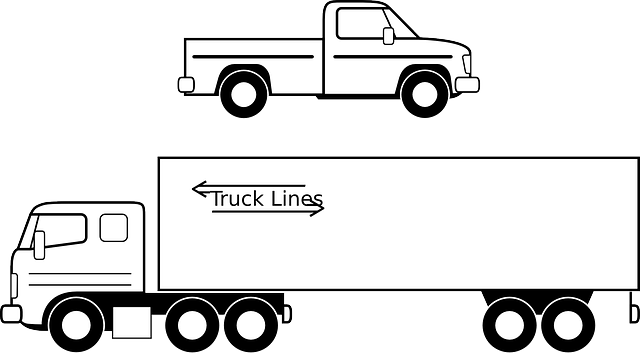Effective risk mitigation through proactive safety measures, regular maintenance checks, employee training, and adopting industry best practices is paramount for organizations to prevent accidents, minimize losses, and ensure business continuity. Affordable business insurance complements these efforts by providing financial protection against unforeseen events, fostering peace of mind, and facilitating swift recovery. By integrating structured maintenance programs, condition monitoring technology, and specialized employee training, businesses can minimize downtime, enhance safety, cut costs, and align with suitable affordable business insurance for comprehensive risk coverage.
In today’s competitive landscape, proactive safety and maintenance practices are essential for mitigating risks and ensuring operational continuity. This article delves into effective strategies for risk mitigation, focusing on understanding foundational concepts, implementing robust maintenance plans, and leveraging affordable business insurance as a key component of comprehensive risk management. We explore best practices tailored to various industries, offering valuable insights to enhance safety, reduce costs, and foster sustainable growth.
Understanding Risk Mitigation: The Foundation of Proactive Safety

Understanding risk mitigation forms the foundation of proactive safety within any organization. By recognizing and assessing potential hazards, businesses can implement targeted strategies to prevent accidents and minimize losses. This proactive approach is a key component in managing risks effectively, ensuring business continuity, and promoting a culture of safety.
Proactive safety practices involve regular maintenance checks, employee training, and the adoption of best practices tailored to specific industry requirements. These measures not only safeguard employees but also protect valuable assets, including equipment and facilities. Moreover, integrating affordable business insurance into this framework provides financial protection against unforeseen events, offering peace of mind and ensuring businesses can recover swiftly from potential setbacks.
Implementing Effective Maintenance Strategies for Long-Term Protection

Implementing effective maintenance strategies is a cornerstone of proactive safety practices, offering long-term protection for any business. Regular, scheduled maintenance checks ensure that equipment and machinery operate at optimal efficiency, reducing the risk of unexpected failures or breakdowns. This not only minimizes downtime but also extends the lifespan of assets, saving businesses money in the long run. By prioritizing preventive measures, companies can mitigate potential hazards and costs associated with accidents or equipment malfunctions.
Affordable business insurance plays a supportive role here by providing financial protection against unforeseen events. However, proactive safety and maintenance practices act as a robust shield, minimizing the likelihood of claims and ensuring operations remain seamless. Regular inspections, timely repairs, and routine servicing create a culture of safety, fostering an environment where potential risks are identified and addressed before they escalate.
Affordable Business Insurance: A Key Component in Comprehensive Risk Management

In today’s competitive landscape, businesses are increasingly recognizing the importance of comprehensive risk management as a key component in their overall success and longevity. Among the various strategies to mitigate risks, affordable business insurance stands out as a crucial element. This type of insurance offers protection against potential financial losses arising from unforeseen events such as property damage, liability claims, and even business interruptions. By investing in quality business insurance, companies can safeguard their assets, maintain operational continuity, and ensure the financial stability that is vital for growth.
Affordable business insurance packages are designed to be accessible and tailored to meet the unique needs of different enterprises. They provide businesses with a safety net, enabling them to focus on their core operations without the constant worry of potential risks. Whether it’s general liability coverage, property insurance, or business interruption plans, these policies offer customized solutions that align with varying risk profiles. Moreover, the competitive market for business insurance has led to numerous providers offering affordable rates, making it easier for businesses to access comprehensive protection at a reasonable cost.
Best Practices to Enhance Safety and Reduce Costs Across Industries

Implementing best practices for safety and maintenance is a powerful strategy to enhance operational efficiency and reduce costs across various industries. Proactive approaches, such as regular equipment inspections, predictive maintenance, and comprehensive training programs, can significantly minimize unexpected downtime and accidents. By fostering a culture of safety awareness, organizations can identify potential risks early on, ensuring that preventive measures are taken before incidents occur.
One key practice is to adopt a structured maintenance program tailored to specific equipment needs. This includes scheduling routine checks, replacing worn-out parts promptly, and leveraging technology for condition monitoring. Additionally, providing employees with specialized training and promoting open communication channels enable them to identify hazards and report concerns effectively. Integrating these practices not only boosts safety but also contributes to cost savings by preventing major breakdowns and reducing the need for expensive emergency repairs. Furthermore, industries can benefit from affordable business insurance that aligns with their proactive safety measures, offering financial protection against unforeseen events while promoting a safer working environment.
By adopting proactive safety and maintenance practices, businesses can significantly mitigate risks and create a more secure working environment. This article has explored essential strategies, from understanding risk mitigation’s foundation to implementing effective maintenance plans and utilizing affordable business insurance as a critical component of risk management. Embracing these best practices ensures enhanced safety measures and cost reduction across various industries, fostering a culture of preparedness and resilience.
